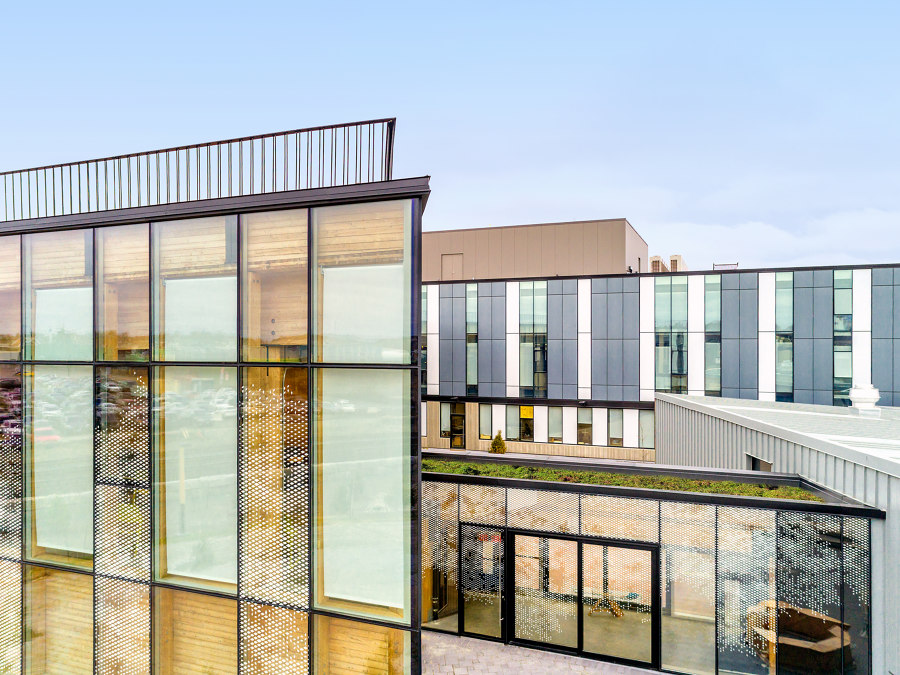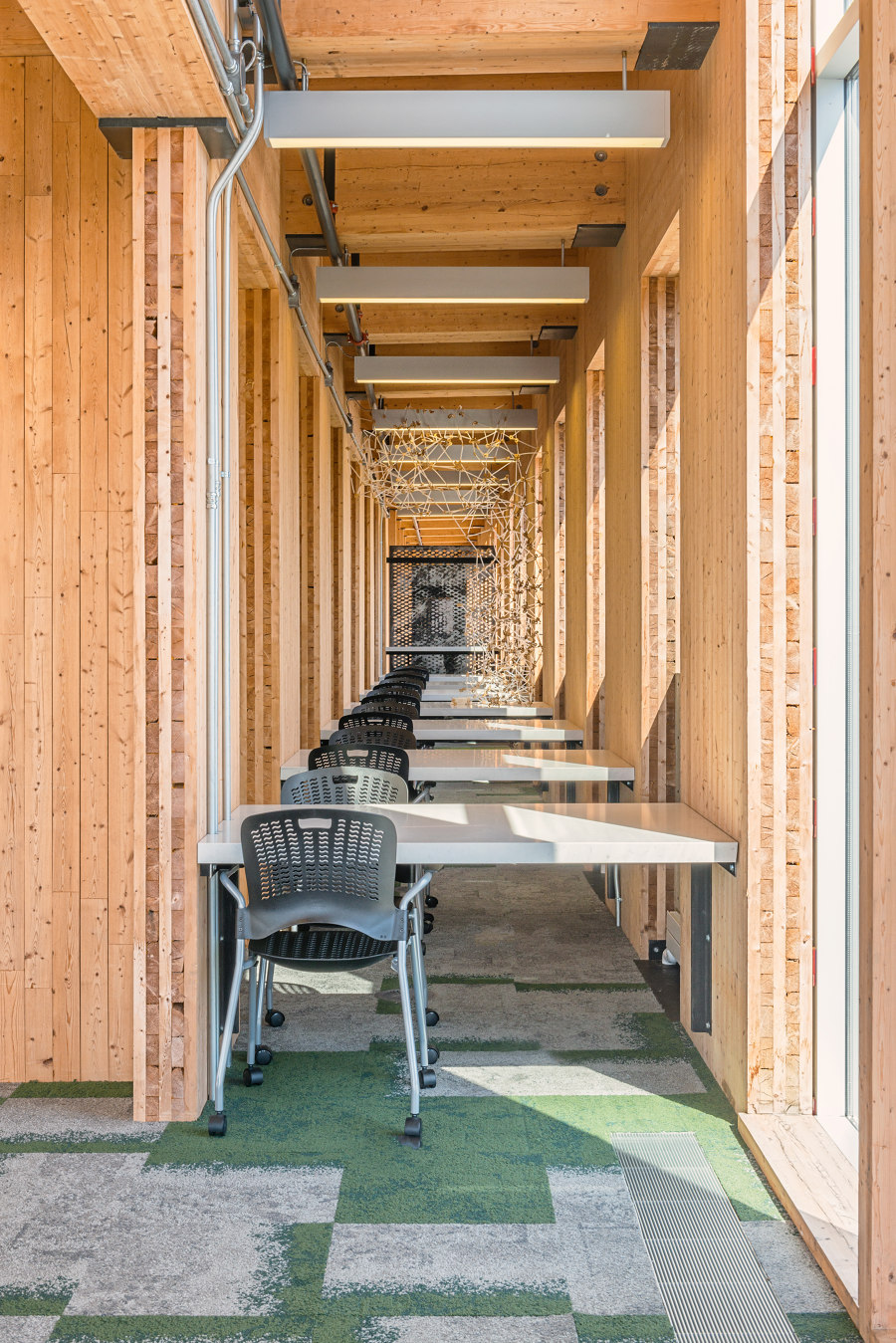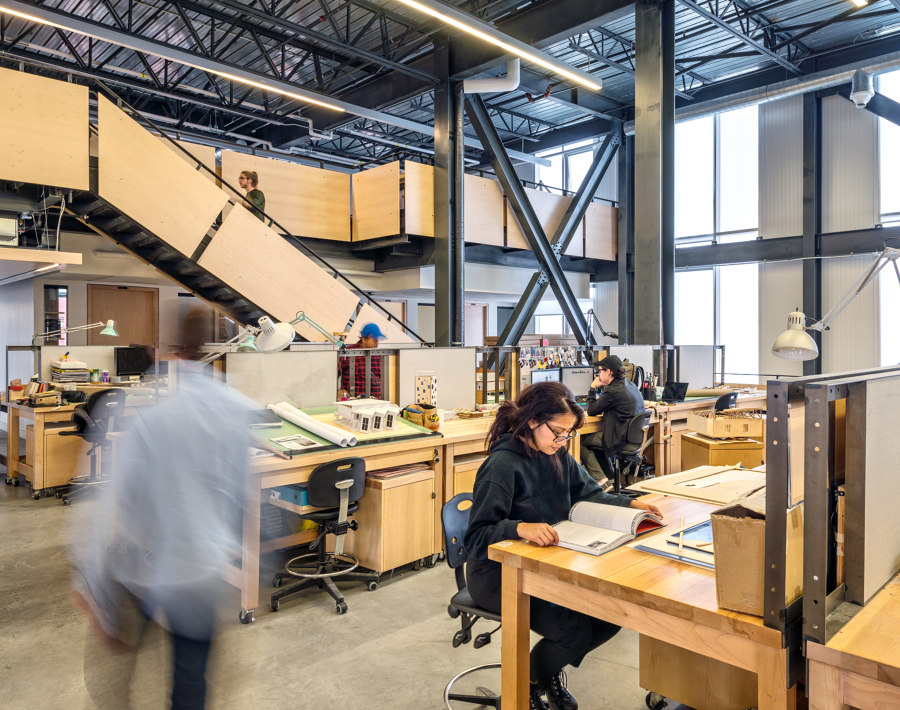LGA Architectural Partners designed Laurentian University’s McEwen School of Architecture to prepare young architects for the critical design issues of the 21st Century. McEwen is not your typical architecture school – its curriculum emphasizes architecture and fabrication techniques focused on the traditional and evolving aspects of life in the north, including Indigenous culture, wood construction, local ecologies and resources, and design for the impact of climate change.
Canada’s first new architecture school in 40 years, McEwen is situated in a unique context, literally and figuratively at the heart of things: in downtown Sudbury, at the crossroads of the Trans-Canada Highway and the Canadian Pacific Railway. Sudbury is a mid-sized, northern city known for nickel mining, with vibrant English, French and Indigenous communities. And while Sudbury is not extremely remote in latitude, its distance from other cities, and its separation by water, rock and forest makes it feel quite remote. And so the design challenge was to realize a school that would be responsive to this place: a teaching laboratory for the advancement of sustainable, community-driven design in northern climates; a stimulus and vibrant think-tank for downtown Sudbury; and an educational hub with a mandate to serve a tri-cultural community.
LGA worked closely with founding Director Terrance Galvin to lead visioning exercises with stakeholders and the local community. The outcomes guided architectural priorities and a curriculum based on northern-related topics. There were plenty of unusual challenges: for example creating a building and a program that could mitigate the stress experienced by many students moving away for the first time from isolated and rural communities — particularly Indigenous ones. Other concerns included designing with an appropriate response to the region’s limited local labour force and extreme seasonal shifts, while instituting efficient sustainable construction methods. The team felt that LEED criteria did not provide the right metrics for this environment, and developed a bespoke tool: a “Sustainable Design Manifesto” specifically addressing the northern context.
In every way, LGA conceived of the campus as a didactic instrument from which students could learn about the making of architecture, and particularly how it could address sustainability, climate, and culture. The resulting mini-campus unites four different building typologies around a central courtyard. The first phase of the project adapted two historic structures: a timber rail shed turned market building into the “FabLab,” where traditional and contemporary building methods are explored, and a former masonry Canadian Pacific Railway ticketing and telegraph office that now serves as faculty offices. In the future, its ground floor will become an added resource to the community as an architectural storefront for the exchange of knowledge and public consultation.
The school’s second phase realized two new buildings: a steel and concrete wing that houses the “Crit Pit” and design studios, and a cross-laminated timber (CLT) building for the auditorium and library. These were developed with a “skin and bones” construction system: a panelized “skin” offered efficient assembly with minimal waste, from materials that capture sun heat in the winter and passive ventilation in the summer, and “bones” from simple, large-span structural systems, (steel and wood respectively) that allow for highly flexible, open-plan interiors. The CLT building immerses students in this relatively new product that is poised to have a tremendous impact on local construction. South facing and sheltered from prevailing winds, the courtyard serves as an outdoor classroom and making space, with a ceremonial fire pit that enables students and the local community to participate in local First Nations traditions.
“As a discipline, architecture embodies the ideologies of optimism and determinism: the belief that our physical environment both shapes and influences who we are and how we will respond to the world,” says Janna Levitt, a founding partner of LGA Architectural Partners. “For this reason, creating a new school of architecture — one that is northern in identity, demanding a dialogue between site, climate and cultural inclusion — was an exhilarating design opportunity. Our approach is very Canadian and also universal in perspective.”
According to the McEwen’s incoming Director David Fortin, “While the full identity of the McEwen School of Architecture will unfold over many decades as we expand and mature, I sense that the infrastructure for this ‘northern’ school, both pedagogically and architecturally, has met its initial challenge. This is already a school of architecture like no other, and it’s just getting started.”
Design Team:
LGA Architectural Partners
Engineers: AECOM
Landscape Architect: Robert Wright Landscape Architect
Sustainability Consultant: Ted Kesik
Contractor: Cy Rheault (Phase 1); Bondfield (Phase 2)











































